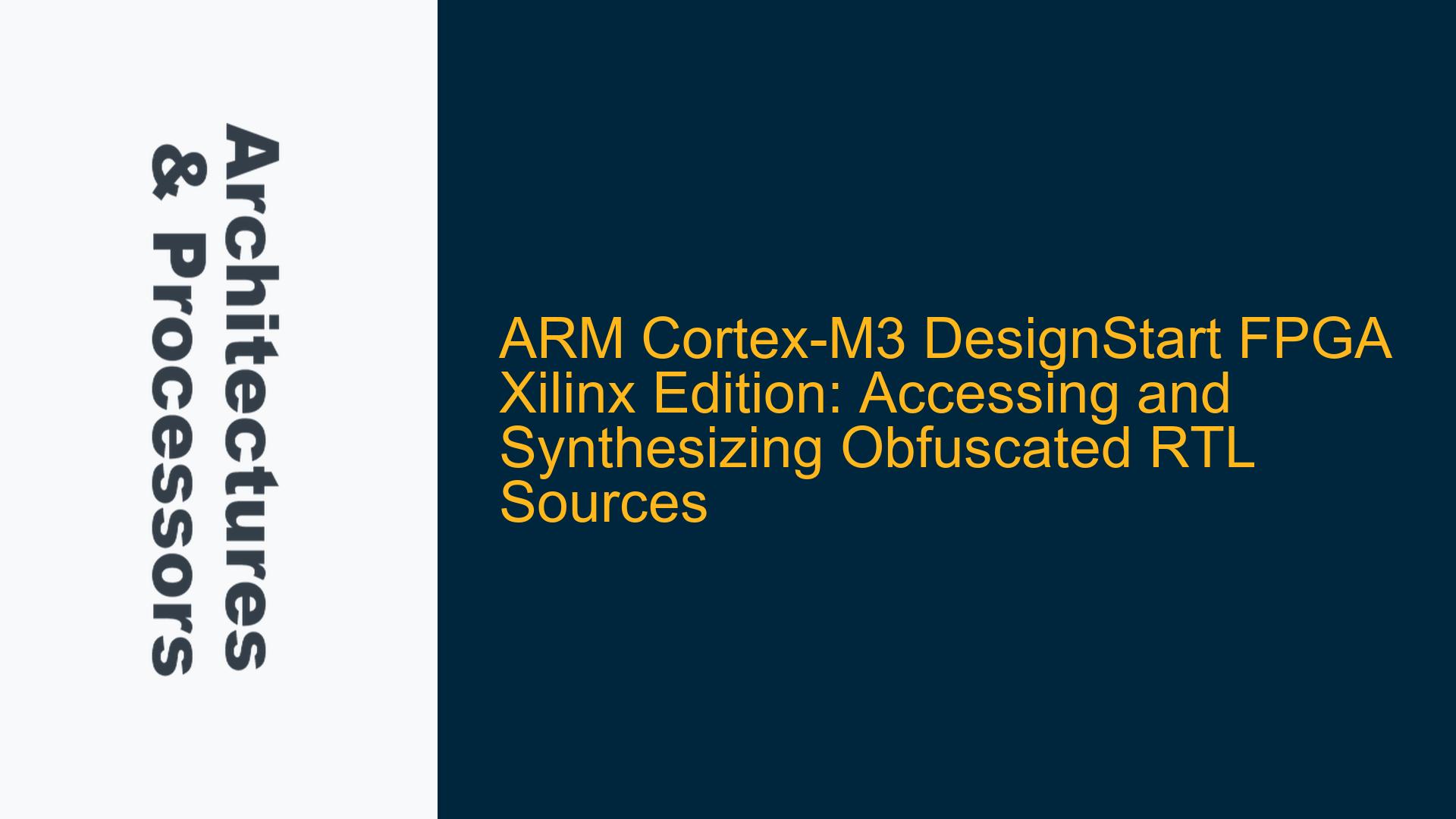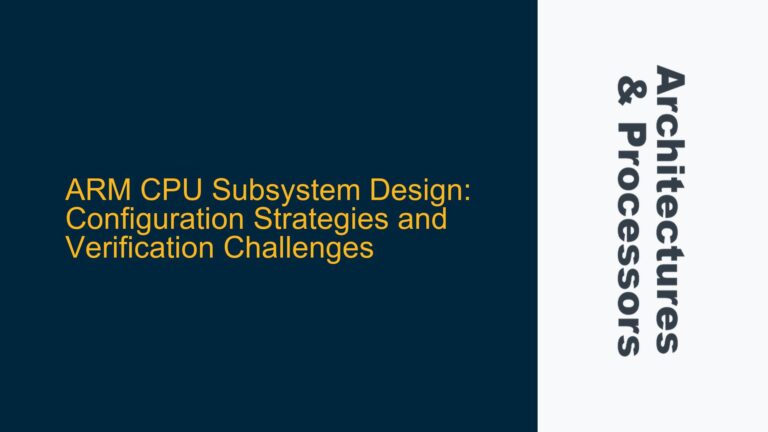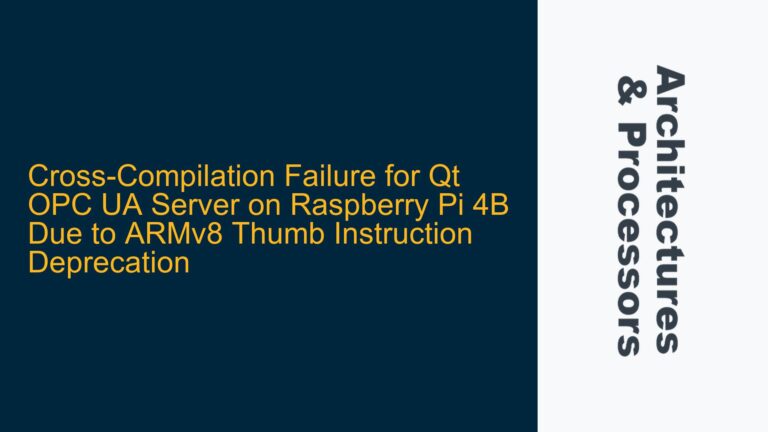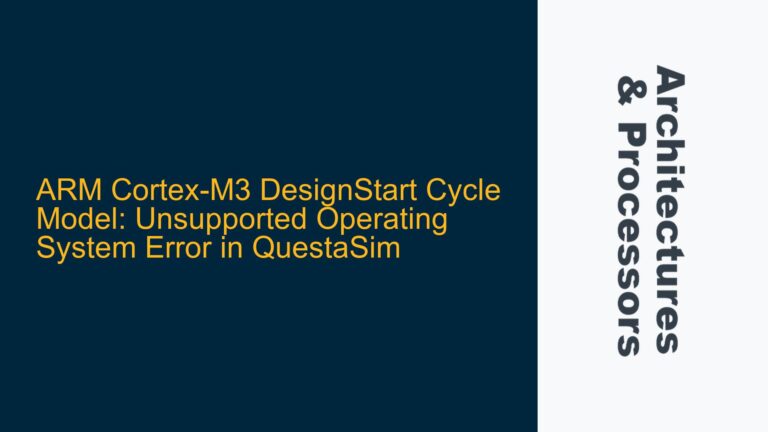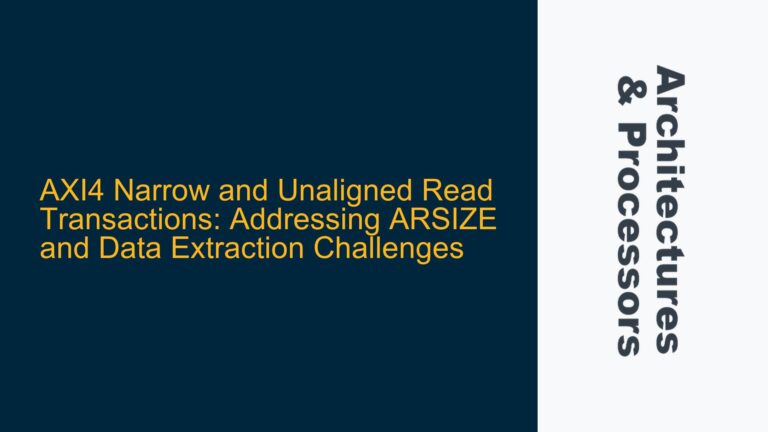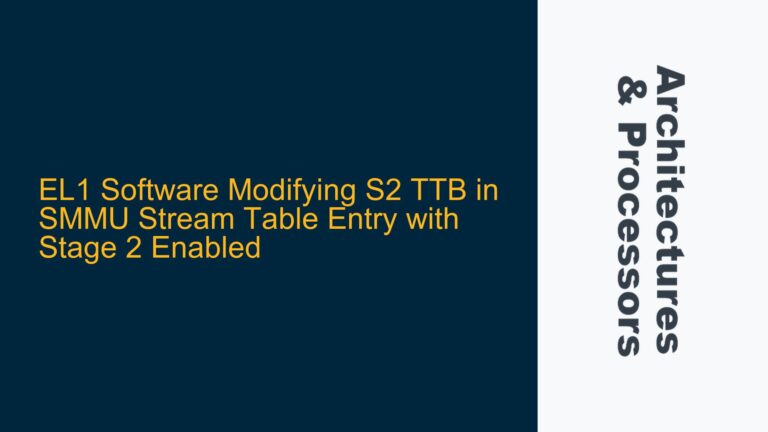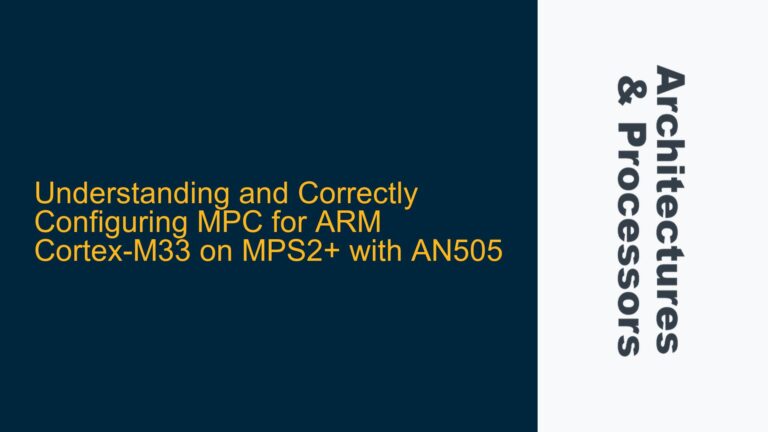ARM Cortex-M3 DesignStart RTL Source Obfuscation and Encryption
The ARM Cortex-M3 DesignStart FPGA Xilinx Edition provides a synthesizable softcore implementation of the Cortex-M3 processor, enabling developers to integrate the processor into custom FPGA designs. However, the RTL (Register Transfer Level) source files provided in the DesignStart package are either obfuscated (cortexm3ds_logic.v) or encrypted (cortexm3.v). This raises questions about the accessibility and modifiability of the RTL sources, as well as the implications for synthesis and debugging.
The obfuscation and encryption of the RTL sources are intentional measures by ARM to protect their intellectual property while still allowing users to synthesize and use the Cortex-M3 core in their designs. Obfuscation involves modifying the Verilog code to make it difficult to read and understand, while encryption involves encoding the RTL source files in a way that requires a specific decryption key or tool to access the original content. Both methods prevent direct modification of the RTL sources but allow the files to be synthesized using standard FPGA tools.
The primary concern for developers is whether they can access the original Verilog source files for the Cortex-M3 processor. The answer is no; ARM does not provide the original, unmodified RTL sources in the DesignStart package. The obfuscated and encrypted files are the only versions available, and they are intended to be used as-is for synthesis. This limitation is a trade-off between providing a free, synthesizable IP core and protecting ARM’s proprietary design details.
Vivado Version Compatibility Issues with Cortex-M3 DesignStart
Another issue highlighted in the discussion is the compatibility of the Cortex-M3 DesignStart softcore with newer versions of Xilinx Vivado. Specifically, users have reported difficulties getting the softcore to run on Vivado versions newer than 2022.1. This compatibility issue can stem from several factors, including changes in Vivado’s synthesis algorithms, updates to the tool’s support for encrypted IP cores, or modifications to the underlying FPGA architecture that affect how the Cortex-M3 RTL is synthesized and implemented.
Vivado is a complex toolchain that undergoes frequent updates, and each new version may introduce changes that impact the synthesis and implementation of third-party IP cores. The Cortex-M3 DesignStart package was likely tested and validated with specific versions of Vivado, and newer versions may introduce incompatibilities that were not anticipated at the time of release. This is a common challenge when working with FPGA tools and third-party IP cores, as the ecosystem is constantly evolving.
The compatibility issue is particularly problematic for developers who rely on the latest versions of Vivado for their projects. Using an older version of Vivado may not be feasible, especially if the project requires features or optimizations available only in newer versions. This creates a dilemma where developers must choose between using the Cortex-M3 DesignStart softcore and leveraging the latest advancements in Vivado.
Strategies for Accessing, Synthesizing, and Debugging Obfuscated RTL
While the obfuscation and encryption of the Cortex-M3 RTL sources prevent direct access to the original Verilog code, there are strategies that developers can employ to work around these limitations and successfully synthesize and debug the softcore in their FPGA designs.
Understanding Obfuscated and Encrypted RTL
The first step in working with obfuscated and encrypted RTL is to understand the nature of these files. Obfuscated RTL, such as cortexm3ds_logic.v, is still human-readable but has been modified to make it difficult to understand the underlying logic. Variable names may be replaced with non-descriptive identifiers, and the structure of the code may be altered to obscure the design’s functionality. Encrypted RTL, such as cortexm3.v, is not human-readable and requires a decryption key or tool to access the original content.
Despite these limitations, both obfuscated and encrypted RTL can be synthesized using standard FPGA tools. The synthesis process does not require access to the original, unmodified RTL sources; instead, it relies on the obfuscated or encrypted files to generate the necessary netlist and bitstream for the FPGA. This means that developers can still use the Cortex-M3 DesignStart softcore in their designs, even if they cannot modify the RTL sources directly.
Synthesis and Implementation in Vivado
To synthesize the Cortex-M3 DesignStart softcore in Vivado, developers must ensure that the toolchain is properly configured to handle obfuscated and encrypted RTL. This typically involves setting up the project to include the necessary RTL files and specifying any required synthesis options or constraints. For encrypted RTL, Vivado may require a specific decryption key or license file to access the content.
When working with newer versions of Vivado, developers should be aware of potential compatibility issues and take steps to mitigate them. This may involve using synthesis directives or constraints to guide the toolchain’s behavior, or modifying the project settings to align with the requirements of the Cortex-M3 DesignStart package. In some cases, it may be necessary to revert to an older version of Vivado that is known to work with the softcore.
Debugging and Verification
Debugging obfuscated and encrypted RTL can be challenging, as the lack of access to the original source code makes it difficult to trace issues back to their root cause. However, there are several strategies that developers can use to overcome this limitation.
One approach is to use simulation models provided by ARM, which allow developers to test and verify the behavior of the Cortex-M3 softcore in a simulated environment. These models are typically provided in a non-obfuscated form and can be used to validate the functionality of the design before synthesis. By comparing the behavior of the simulation model with the synthesized design, developers can identify and address any discrepancies.
Another strategy is to use FPGA debugging tools, such as Xilinx’s Integrated Logic Analyzer (ILA), to probe the internal signals of the synthesized design. While this does not provide direct access to the RTL sources, it allows developers to observe the behavior of the design in real-time and identify potential issues. This approach requires a good understanding of the Cortex-M3 architecture and the expected behavior of the design, as the obfuscated RTL makes it difficult to correlate observed signals with specific parts of the code.
Alternative Solutions and Workarounds
If the limitations of the Cortex-M3 DesignStart package are too restrictive for a particular project, developers may consider alternative solutions. One option is to use a different softcore processor that provides access to the RTL sources, allowing for greater flexibility and customization. There are several open-source RISC-V cores available that can be used as alternatives to the Cortex-M3, such as the PicoRV32 or the VexRiscv.
Another option is to explore commercial licensing options with ARM, which may provide access to the original RTL sources and additional support. While this approach involves additional cost, it may be justified for projects that require extensive customization or have strict performance and reliability requirements.
Best Practices for Working with Obfuscated and Encrypted RTL
When working with obfuscated and encrypted RTL, it is important to follow best practices to ensure a successful design implementation. These include:
-
Thoroughly Reviewing Documentation: ARM provides detailed documentation for the Cortex-M3 DesignStart package, including guidelines for synthesis and implementation. Developers should carefully review this documentation to understand the requirements and limitations of the softcore.
-
Using Simulation Models: Simulation models are a valuable tool for verifying the behavior of the design before synthesis. Developers should make use of these models to validate the functionality of the Cortex-M3 softcore and identify any potential issues early in the design process.
-
Leveraging FPGA Debugging Tools: FPGA debugging tools, such as Xilinx’s ILA, can provide valuable insights into the behavior of the synthesized design. Developers should use these tools to probe internal signals and identify any discrepancies between the expected and observed behavior.
-
Staying Informed About Toolchain Updates: The FPGA toolchain ecosystem is constantly evolving, and developers should stay informed about updates and changes that may impact the synthesis and implementation of third-party IP cores. This includes monitoring release notes and community forums for information about compatibility issues and workarounds.
-
Exploring Alternative Solutions: If the limitations of the Cortex-M3 DesignStart package are too restrictive, developers should consider alternative solutions, such as open-source RISC-V cores or commercial licensing options with ARM.
By following these best practices, developers can successfully work with obfuscated and encrypted RTL and overcome the challenges associated with the Cortex-M3 DesignStart package. While the lack of access to the original RTL sources presents certain limitations, the strategies and techniques outlined in this guide provide a path forward for synthesizing, debugging, and implementing the Cortex-M3 softcore in FPGA designs.
